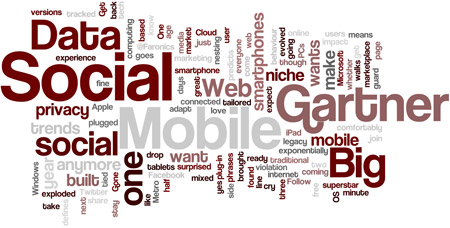The question of what pictures we can use on a website comes up often. Here is a good article on when you can take pictures for your own use.
Nearly every modern phone has a camera attached to it and subsequently more and more people are taking photos in public places than ever before. The shot might be as simple as snapping a picture of a parade or as tricky as recording video of a riot. Regardless of the reasons, the rules for photographing in public places are the same.
For the most part, your right to take photographs and video in public places in the United States is protected under the First Amendment under free speech. This includes snapping pictures of your favorite monument when you’re on vacation or taking part in a little citizen journalism. It’s not as cut and dried as you may think and it’s good to know your rights and the caveats that come with them.
The General Rule: If You Can See It You Can Shoot It

Your basic right is actually pretty simple: if you’re in a public place and you can see it, you can shoot it. This means as long as you’re in a public location you can legally take almost any picture. However, if you’re using a telephoto lens, parabolic microphone, or hidden camera to get a shot of a private property when you’re standing on public property you might have an issue if someone on that property has an expectation of privacy. So, what constitutes a public place? Most places are obvious, a park, a street, a soccer field—these are unquestionably legal places to take pictures of anything happening. But what about all those Instagram photos of food you’ve taken inside a business? That’s a little different.
Generally if a private property is open to the public (like a restaurant, retail store, tourist areas, etc) you are allowed to take photographs and video unless it is expressly posted somewhere on the premise that you can’t. In most cases it’s okay to assume you’re allowed to take pictures and video in a shop that doesn’t expressly forbid it. However, if a property owner (or store employee) tells you to stop, you have to stop. More importantly, use good judgement and assess the situation and environment before snapping pictures.
This also goes for citizen journalism. If you see an accident you want to record, public servant misconduct, or even TSA checkpoints, you can do so as long as you’re not interfering with police or medical operations. As far as the Department of Justice is concerned you’re also allowed to shoot video or still shots of police officers provided they’re on public land. Videotaping police officers is still a tricky situation without a concrete ruling, but the courts have leaned toward protecting your right to film officers. Photo by Christopher.
Where and When You Get Into Trouble

As with most laws you’ll find some exceptions to the rules. Photographing on any clearly marked private property is considered trespassing. As for public government property you’re mostly okay, however you cannot take photos of most military bases or inside most courthouses. A few other big caveats exist as well.
Just because some places are public doesn’t make them legal for photography. For instance, a bathroom is a public place, but people have an expectation of privacy in the bathroom, so photos are typically not a good idea. This is also the case with anywhere else people might expect privacy, including inside places like AA meetings or doctor’s offices.
The same goes for photos of people in a private space where they have an expectation of privacy, even if you’re on public property. So, if you can see in your neighbor’s window from the sidewalk while they’re showering, you can’t take that picture, even though you’re on public property (and you might want to tell your neighbor to close their curtains). The general rule is basically if you didn’t want someone covertly taking a picture of you in a semi-private place, it’s probably not a good idea to take your own picture. These rules may vary from state to state, so check local laws before you’re labeled a “peeping tom.” If you do get caught taking a photo you shouldn’t or if you’re accused of taking taking an illegal picture when you’re in the clear your response should be about the same. Photo by Julian Stallabrass.
What To Do If Someone Says You’re Trespassing

First up, the easy answer when you’re accused of trespassing: if you walk onto clearly marked private property without permission you’re trespassing and you should stop taking pictures and leave. If an employee or security guard tells you to stop taking pictures because you’re on private property, stop taking pictures. Things get tricky here, if no signs are posted saying you can’t take photos but it’s a public area, you’re technically allowed, but it’s up to you if it’s worth the trouble to haggle over the details with a security guard. You likely have the right, but if you’re questioned directly you should seek legal counsel.
Regardless of whether you’re in the right or wrong, no one is allowed to take your camera away from you in a public place. Even if you’re trespassing, the property owner and the police cannot have your camera (or film or SD card) without a court order. Which brings us to the last caveat, publishing or uploading photos online. Photo by Dru Bloomfield.
Pay Attention to Where and What You Upload Online

Your rights for taking photographs don’t stop when the picture is snapped. If you place those photos online or sell them the situation changes. While you have the right to take pictures almost anywhere, publishing certain photos might get you in trouble in civil courts. Thankfully, the distinction is pretty clear.
You can’t use someone’s likeness for commercial purposes without their express permission. This means you can’t take a picture in a public place with recognizable faces and then sell it to Coca-Cola or a stock photo company (you can, however sell them to news organizations or use them for art). The same goes for many famous landmarks and some National Parks. You can freely shoot the photos, but selling them for commercial purposes may require a permit or additional fee.
You also can’t publish a photo that paints a person in a false light. For instance, if you took a picture of me fake-punching Stephen Hawking with the caption: “Taken moments before Thorin punched Stephen Hawking in the face,” I would probably want to take you to civil court (assuming I didn’t actually punch Stephen Hawking).
Finally, you can’t publish a photo that gives away private information about someone. This includes photos like the aforementioned AA meeting or doctor’s office along with any other situation where a person has a reasonable expectation of privacy.
The last concern you should have is your own rights when you publish photos online. Some popular web services like Instagram require you to grant usage permission to Instagram when you upload pictures. This doesn’t mean they get ownership of your photos, but it does mean they can use them any way they like. Other services, like Flickr, allow you to set who can and can’t use your photographs. If you don’t want to sell or make public any of these pictures make sure you’re using a service that leaves all the rights in your hands and be sure to check out Creative Commons for an easy way to license your photos.
In general, the mantra of “If you can see it you can shoot it” will keep you safe from legal prosecution in the United States, but not all countries and states are the same so check out local laws before shooting. Finally, if you feel your rights are violated, seek professional legal advice. You can also print out attorney Bert P. Krages pocket-sized pamphlet so you always have a list of your rights handy.
Disclaimer: the above isn’t meant as professional legal counsel and is meant to help you familiarize yourself with the basics of the laws of photography in public. If you’re unsure whether you are on public or private property your best bet is check before you snap photos. If you’re concerned about a specific case or situation you should contact a lawyer.
Reposted from http://lifehacker.com/5912250/know-your-rights-photography-in-public
Photo by Banalities.

 Facebook may seem like a harmless hobby, but make no mistake: The blunders you post on the site can come back to haunt you.
Facebook may seem like a harmless hobby, but make no mistake: The blunders you post on the site can come back to haunt you.







